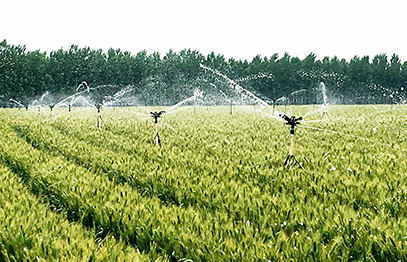Aug . 11, 2024 19:36 Back to list
Exploring the Benefits and Functionality of Underground Well Pumps for Efficient Water Supply
The Importance and Functionality of Underground Well Pumps
Underground well pumps are essential tools that facilitate the extraction of groundwater from deep underground sources. These pumps play a critical role in water supply systems for agricultural, residential, and industrial purposes worldwide. This article delves into their functionality, types, installation considerations, and maintenance needs, emphasizing their significance in sustainable water management.
At the core of an underground well pump's function is its ability to lift water from subterranean aquifers to the surface. The groundwater, often found hundreds of feet beneath the surface, can be harvested through two main types of pumps submersible pumps and jet pumps.
Submersible Pumps As the name suggests, submersible pumps operate underwater. They consist of a sealed motor and a pump body, which work together to push water to the surface. These pumps are highly efficient and effective for deep wells because they are placed directly in the water, reducing the risk of cavitation - a phenomenon where air bubbles form and collapse in the pump, leading to inefficiency and potential damage. The design of submersible pumps also allows for a quieter operation compared to their jet counterparts.
Jet Pumps On the other hand, jet pumps function by using air pressure to draw water up from a well. They are typically used for shallower wells, generally less than 25 feet deep. A jet pump operates above the water level and requires an intricate system of pipes and a foot valve to operate efficiently. While less efficient at greater depths compared to submersible pumps, jet pumps are easier to access for maintenance and repairs.
underground well pump

Installation Considerations Installing an underground well pump is a complex process that requires careful planning and execution. Before installation, a proper groundwater assessment is essential to determine the water table depth, flow rate, and the well's structural integrity. Additionally, local regulations regarding water extraction must be reviewed to ensure compliance. It's advisable to engage professional services for both the design and installation to guarantee optimal performance and longevity of the pump system.
Maintenance Needs Regular maintenance is crucial to the longevity and efficiency of underground well pumps. Key maintenance tasks include routine inspections, monitoring water levels, and checking for signs of wear and tear on the pump components. Cleaning the pump and surrounding well chamber can prevent mud and mineral buildup, which can impair functionality. In particular, submersible pumps often require less frequent maintenance due to their underwater operation, but monitoring and occasionally pulling the pump for inspection is still essential.
Moreover, water quality testing should not be overlooked. Since well water may contain contaminants, periodic testing can help ensure that the water remains safe for consumption and agricultural use.
In conclusion, underground well pumps are vital components of modern water management systems, enabling users to access crucial water resources efficiently. Whether through submersible or jet pumps, understanding their functionality, installation challenges, and maintenance requirements ensures that we can harness groundwater sustainably for future generations. As climate patterns shift and water scarcity becomes a growing concern, the role of underground well pumps in providing a reliable and safe water supply cannot be overstated. Proper investment in and care for these systems not only serve immediate needs but also support long-term environmental sustainability.
-
Submersible Water Pump: The Efficient 'Power Pioneer' of the Underwater World
NewsJul.01,2025
-
Submersible Pond Pump: The Hidden Guardian of Water Landscape Ecology
NewsJul.01,2025
-
Stainless Well Pump: A Reliable and Durable Pumping Main Force
NewsJul.01,2025
-
Stainless Steel Submersible Pump: An Efficient and Versatile Tool for Underwater Operations
NewsJul.01,2025
-
Deep Well Submersible Pump: An Efficient 'Sucker' of Groundwater Sources
NewsJul.01,2025
-
Deep Water Well Pump: An Efficient 'Sucker' of Groundwater Sources
NewsJul.01,2025
-
 Submersible Water Pump: The Efficient 'Power Pioneer' of the Underwater WorldIn the field of hydraulic equipment, the Submersible Water Pump has become the core equipment for underwater operations and water resource transportation due to its unique design and excellent performance.Detail
Submersible Water Pump: The Efficient 'Power Pioneer' of the Underwater WorldIn the field of hydraulic equipment, the Submersible Water Pump has become the core equipment for underwater operations and water resource transportation due to its unique design and excellent performance.Detail -
 Submersible Pond Pump: The Hidden Guardian of Water Landscape EcologyIn courtyard landscapes, ecological ponds, and even small-scale water conservancy projects, there is a silent yet indispensable equipment - the Submersible Pond Pump.Detail
Submersible Pond Pump: The Hidden Guardian of Water Landscape EcologyIn courtyard landscapes, ecological ponds, and even small-scale water conservancy projects, there is a silent yet indispensable equipment - the Submersible Pond Pump.Detail -
 Stainless Well Pump: A Reliable and Durable Pumping Main ForceIn the field of water resource transportation, Stainless Well Pump has become the core equipment for various pumping scenarios with its excellent performance and reliable quality.Detail
Stainless Well Pump: A Reliable and Durable Pumping Main ForceIn the field of water resource transportation, Stainless Well Pump has become the core equipment for various pumping scenarios with its excellent performance and reliable quality.Detail
